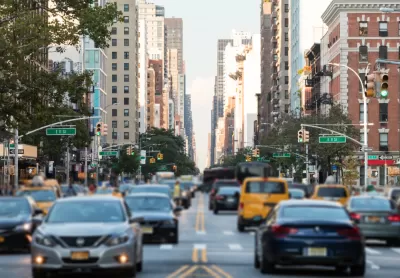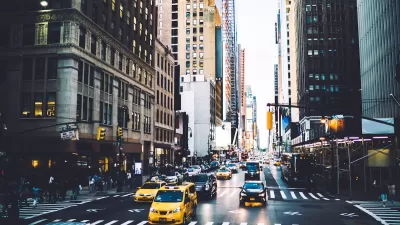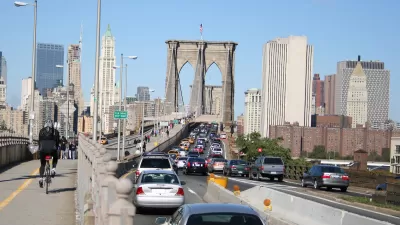Hundreds of people signed up to speak at the city’s first public meeting on the long-delayed plan to charge drivers entering Manhattan’s Central Business District.

New Yorkers got their first opportunity to comment on the city’s proposed congestion pricing plan in the first of six public hearings on the issue. As Catalina Gonella and Phil Corso write in Gothamist, “The plan, which would toll drivers in Manhattan south of 60th Street as much as $23 during rush hour, was designed to lessen traffic congestion by as much as 20%, according to an MTA analysis.”
Close to 400 people signed up to speak at the meeting, which ran late into the night last Thursday. Some expressed concern about the cost to residents in communities that lack subway stations or round-the-clock bus service, such as senior citizens who travel to Manhattan for medical appointments. Others showed support for the plan, hoping it will help improve transit and reduce pollution and traffic deaths.
According to the article, “The affected toll zone, dubbed the ‘Central Business District,’ draws roughly 7.67 million people on the average weekday, according to an MTA study. The capital plan was last pegged at $56 million with about 30% of that being covered by the congestion pricing proposal, the MTA said.”
The program, which was originally scheduled to start collecting revenue in 2021, was delayed repeatedly, including earlier this year when the Federal Highway Administration (FHA) asked the city to answer hundreds of additional questions regarding its environmental impact assessment.
FULL STORY: Commuters sound off at MTA’s first congestion pricing public hearing

Study: Maui’s Plan to Convert Vacation Rentals to Long-Term Housing Could Cause Nearly $1 Billion Economic Loss
The plan would reduce visitor accommodation by 25,% resulting in 1,900 jobs lost.

Alabama: Trump Terminates Settlements for Black Communities Harmed By Raw Sewage
Trump deemed the landmark civil rights agreement “illegal DEI and environmental justice policy.”

Why Should We Subsidize Public Transportation?
Many public transit agencies face financial stress due to rising costs, declining fare revenue, and declining subsidies. Transit advocates must provide a strong business case for increasing public transit funding.

Paris Bike Boom Leads to Steep Drop in Air Pollution
The French city’s air quality has improved dramatically in the past 20 years, coinciding with a growth in cycling.

Why Housing Costs More to Build in California Than in Texas
Hard costs like labor and materials combined with ‘soft’ costs such as permitting make building in the San Francisco Bay Area almost three times as costly as in Texas cities.

San Diego County Sees a Rise in Urban Coyotes
San Diego County experiences a rise in urban coyotes, as sightings become prevalent throughout its urban neighbourhoods and surrounding areas.
Urban Design for Planners 1: Software Tools
This six-course series explores essential urban design concepts using open source software and equips planners with the tools they need to participate fully in the urban design process.
Planning for Universal Design
Learn the tools for implementing Universal Design in planning regulations.
Smith Gee Studio
Alamo Area Metropolitan Planning Organization
City of Santa Clarita
Institute for Housing and Urban Development Studies (IHS)
City of Grandview
Harvard GSD Executive Education
Toledo-Lucas County Plan Commissions
Salt Lake City
NYU Wagner Graduate School of Public Service




























